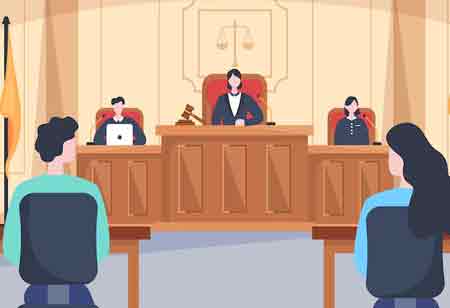Thank you for Subscribing to Gov Business Review Weekly Brief
Ensuring Public Safety: The Role of Government in Protecting Communities
Public safety is a fundamental responsibility of government entities, aiming to safeguard citizens, maintain order, and promote secure communities.

By
Gov Business Review | Tuesday, July 11, 2023
Stay ahead of the industry with exclusive feature stories on the top companies, expert insights and the latest news delivered straight to your inbox. Subscribe today.
Public safety is a core responsibility of government entities, ensuring the well-being and security of communities.
FREMONT, CA: Public safety is a fundamental responsibility of government entities, aiming to safeguard citizens, maintain order, and promote secure communities. From law enforcement and emergency response to disaster management and crime prevention, government agencies play a pivotal role in ensuring the safety and well-being of the public. This article explores the importance of public safety and the role of government in protecting communities.
Law Enforcement and Crime Prevention: Law enforcement agencies are at the forefront of maintaining public safety by enforcing laws, preventing crime, and protecting communities. Through proactive patrolling, investigations, and community engagement, law enforcement officers deter criminal activities and foster trust between citizens and the authorities. Collaborative efforts such as community policing initiatives and crime prevention programs reduce crime rates and enhance public safety.
Emergency Response and Disaster Management: Government agencies are responsible for responding to emergencies and managing disasters effectively. Whether natural disasters, public health crises, or acts of terrorism, emergency response teams coordinate efforts to mitigate risks, provide immediate aid, and restore order. Effective emergency management involves preparedness, rapid response, and recovery strategies, ensuring the safety of individuals and minimizing the impact on communities.
Public Health and Safety Regulations: Government agencies establish and enforce regulations that promote public health and safety. These regulations cover many areas, including food safety, environmental protection, occupational health and safety, and product safety standards. By setting guidelines, conducting inspections, and monitoring compliance, governments help prevent health hazards, protect consumers, and ensure the safety of workplaces and public spaces.
Infrastructure and Transportation Safety: Government agencies play a vital role in ensuring the safety of infrastructure and transportation systems. Through regulatory frameworks and oversight, governments establish safety standards for construction, transportation networks, and public facilities. This includes measures to enhance building codes, road safety regulations, and the implementation of safety protocols for public transportation. Governments enhance public safety and prevent accidents and injuries by investing in infrastructure maintenance and upgrading transportation networks.
Public Education and Awareness: Government entities are responsible for educating and raising awareness among citizens about public safety measures. This includes disseminating information about emergency preparedness, crime prevention strategies, and health and safety guidelines. By providing resources, conducting public campaigns, and leveraging communication channels, governments empower individuals to make informed decisions, take proactive measures, and contribute to community safety.
Collaboration with Communities and Stakeholders: Effective public safety requires collaboration and engagement between government agencies, communities, and stakeholders. Governments actively involve communities in developing safety plans, participating in neighborhood watch programs, and reporting suspicious activities. By fostering partnerships with businesses, educational institutions, nonprofit organizations, and community groups, governments harness collective efforts to address public safety challenges and enhance community resilience.
Technological Advancements and Data-Driven Approaches: Governments increasingly adopt technological advancements and data-driven approaches to enhance public safety. This includes using surveillance systems, crime mapping tools, and predictive analytics to identify crime hotspots, allocate resources efficiently, and prevent potential threats. By leveraging technology, governments can proactively identify patterns, respond swiftly to emergencies, and allocate resources effectively, ultimately enhancing public safety outcomes.
Conclusion: Public safety is a core responsibility of government entities, ensuring the well-being and security of communities. Through law enforcement, emergency response, regulatory frameworks, and public education, governments protect citizens, prevent crime, and manage disasters effectively. Collaboration with communities, stakeholders, and technological advancements further strengthen the efforts to enhance public safety. As societies continue to evolve, the role of government in ensuring public safety remains crucial in building resilient communities and fostering a sense of security for all citizens.






